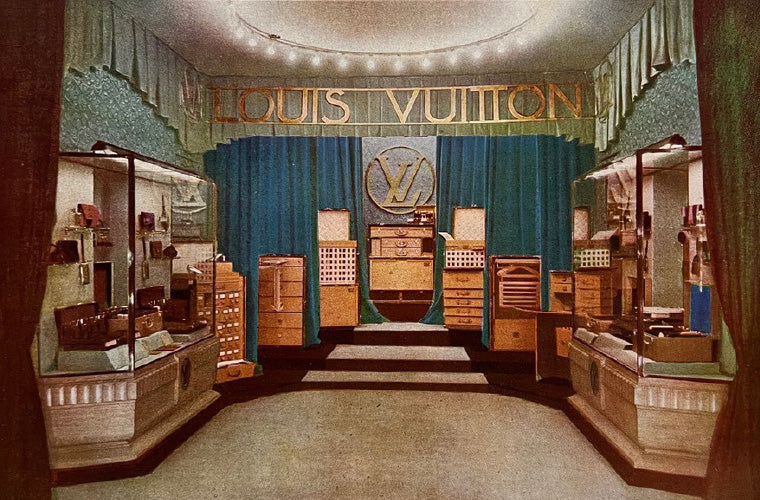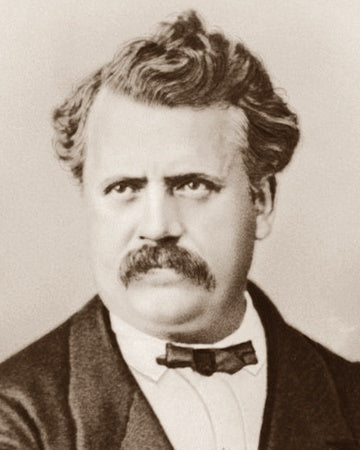

Bentleys present a story of the Louis Vuitton brand and the remarkable family behind it.
1893
Georges exhibits luggage at the Chicago World’s Fair. The only vendor of French travel accessories present, he sells out entirely. J.P Morgan and his family become valued clients and Georges is introduced to famed retailer, John Wanamaker.
1896
Tired of imitation, Georges patents the iconic LV monogram design. The pattern truly is centuries in the making, paying homage to the rosette motif of a medieval Franc box from his personal collection, and is first used on a Vuitton trunk in 1897.
1901
The Steamer Bag is introduced.
1905
The LV symbol, minus its floral rosette, is patented in its own right. Pierre Savorgnan de Brazza commissions a “Malle Lit” explorer’s camp bed trunk in monogram canvas. Vuitton had previously developed a range of trunks covered in zinc, aluminium and copper designed for expeditions to the tropics.
1914
New Vuitton premises are opened at 70, Champs Élysées.



1924
Vuitton provides luggage for La Crociera Nera, an expedition organised by Citroën from Paris to Timbuktu.
1925
Georges’ son, Gaston-Louis, designs the company’s stand at the Exposition Internationale des Arts Décoratifs et Industriels Modernes, Paris. It is difficult to overstate the impact this event had on the Art Deco movement, with the Vuitton display featuring a tortoise-shell fitted dressing case made for Marthe Chenal in crocodile skin. The great opera singer Lily Pons orders a special trunk to carry 36 pairs of shoes – six pairs more than usual as her feet were so small. The trunk’s design still bears her name today.
1928
The Indian Maharajas become important clients of Vuitton, their love and understanding of craftsmanship leading them to place great orders. Picnic and dressing sets with silver fittings, cases for polo and fishing equipment and a shoe polishing kit are commissioned by Hari Singh, Maharaja of Jammu and Kashmir.
1930
Citroën’s La Croisière Jaune expedition from Paris to Peking is furnished with Vuitton luggage. The Vuitton Keepall is introduced.
1931
The Exposition Coloniale Internationale opens in Paris, Vuitton’s pavilion centred around a 20-foot high totem. Gaston-Louis’ creations for the exhibition marry exotic skins and luxurious materials, each sourced from and inspired by the imperial colonies.
1938
A visit to Paris by the British King George VI and his wife, Elizabeth, prompts a special gift to young Princesses Elizabeth and Margaret; a set of smooth cowhide suitcases, lined in pink moiré silk and crafted to house a pair of dolls.
1959
Rubberised canvas is introduced and enables the first flexible luggage in monogram canvas to be made.
1987–Present
Louis Vuitton merges with Moët Hennessy to create LVMH, the world’s first true luxury goods group. Under the guidance of Bernard Arnault, LVMH expansion continues across the globe. Louis Vuitton is consistently ranked as the world’s number one luxury goods brand.
References
Du Cadeau ou La Bonne Manière – 1924 Edition
Louis Vuitton ‘Extrait de la Revue Mobilier et Decoration’ - circa 1925
‘100 Legendary Trunks – Louis Vuitton’ – Pierre Leonforte and Eric Pujalet-Plaa. Abrams, 2010.
Read Pt.1 – 1835 –1892




